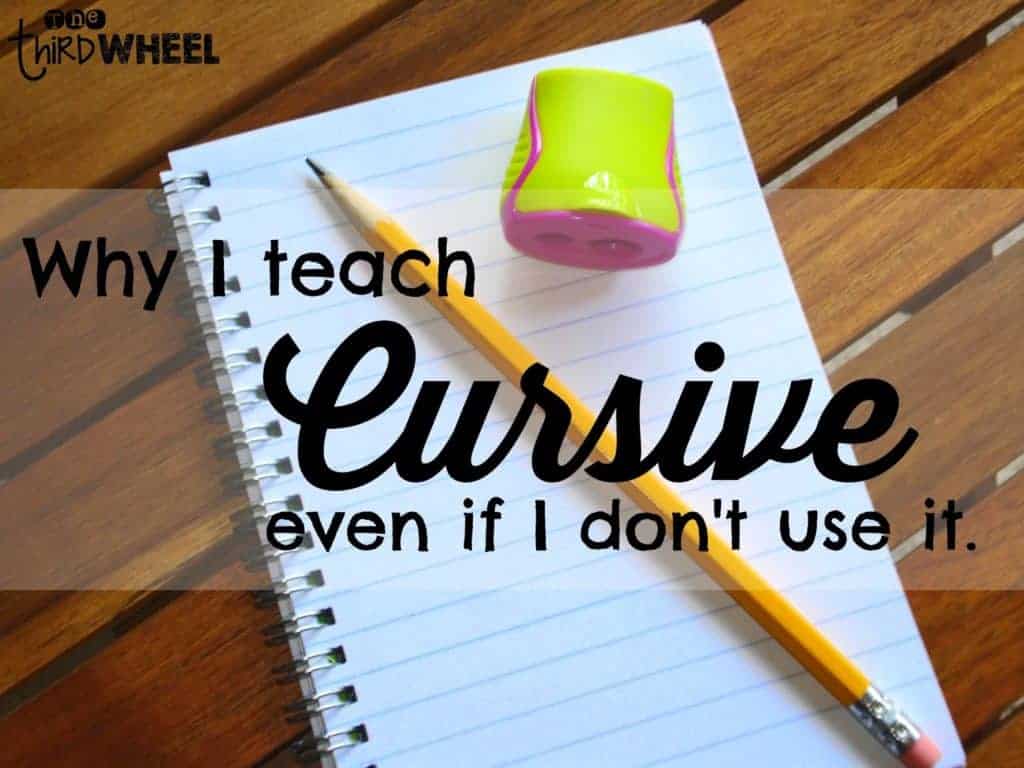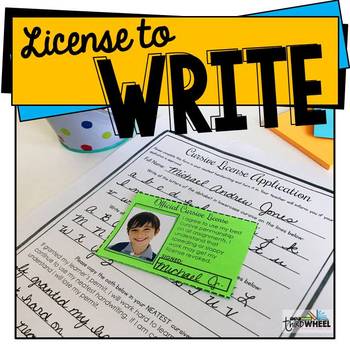Why I Teach Cursive….even if I don’t use it!
Cursive writing is making a comeback in many schools, and students are learning it earlier than ever before. Since I wrote this post several years ago, I wanted to go back and look at the new information that has become available about the benefits of teaching cursive to elementary students.

Before we get too deep into this, I want to be up-front. As you can probably tell from the title, I don’t use cursive in daily life. While I have no problems reading it, I just never really developed the level of writing fluency that I would like to have and sometime during middle school, I gave up the whole thing.
The benefits of teaching cursive writing
Now that we’ve got that out of the way, I want to get to the meat of this article. Why should we be teaching cursive to our students?
There is a growing body of research that supports cursive’s superiority to print in terms of how the brain processes. There’s also the real-world experiences from the classroom. Today I want to share a bit of both to help you get a better understanding of why you should be teaching cursive in your classroom.
1. It supports reading and writing development for students with dyslexia.
Unlike print, cursive has very little overlap in letter formation. This makes it easier for students with dyslexia to read because it reinforces the connections between letters to make words. There are clear differences between the b, d, p, and q making it easier for these students to distinguish between these letters and reducing (or eliminating) letter reversals.
I typically had a classroom with at least 2-3 students with dyslexia, which motivated me to start early. Now that I have a first-grade daughter who has been identified as dyslexic, I am seeing even more clearly how it benefits these students.
2. It improves writing speed & conserves cognitive resources.
The interconnected letters used in cursive improves students writing speed and makes writing less laborious. In fact, there was a study done by the College Board several years ago that found that students using cursive scored slightly higher than their printing peers on the essay portion of the SAT.
It is believed that this is because cursive writing is more efficient than print and helps students allocate more cognitive resources toward their essay content rather than the physical act of writing.
3. It makes a great motivator.
Teaching cursive is a great way to motivate students to complete work and write neatly. There is something about cursive that makes kids excited. Don’t ask me what it is…I am pretty sure I am too old to know. However, I do remember having that same excitement back when I was a third-grader.
In my classroom, I used this to get them motivated to transition quickly. The more efficiently we transitioned and completed work neatly, the more time we had at the end of the day. I always ended our day with cursive, so this meant the students had control of how much time was available to learn.
4. It helps improve memory & comprehension.
Writing something by hand, like class notes, has been shown to improve recall for that material more than typing. However, these effects are bolstered when that writing is done in cursive.
Research done out of the University of Washington has shown that writing engages both hemispheres of the brain, including areas associated with thinking, language, and memory.
While we often push typing for students who struggle, cursive may offer a good secondary plan for writing.
5. It allows you to add interest to other academic skill practice.
Want to get kids excited about practicing spelling words? Let them use cursive!
Want to get them to write paragraphs? Use it as a cursive “test”.
I had my kids eagerly writing 2-4 quick writes a week because I was checking them as part of how they can earn their cursive license (which I’ll tell you more about next).
Of course, they also had to have the parts of a paragraph and color code them in order to get credit.
BOOM! Kids excited to write.
Keeping kids excited about cursive writing.
In Texas, our state standards still include mastery of cursive writing. Therefore, it wasn’t an option to teach this skill.
That being said, I also needed to make sure that my students were able to write legibly while they developed these skills.
I found great cheap handwriting apps that allowed the students to practice their handwriting skills.
I made things fun by creating a cursive license. Much like a driver’s license, I added the student’s photo and they were asked to write their signature, and students were able to earn their license by completing a short writing “test”.
This “test” required them to show me that their handwriting was legible across an entire paragraph.
Once they’ve earned the license they are allowed to write cursive on any classroom assignments. Until that point, they are only using cursive during approved times (like when we are in writing).
If they are not neat or speed through their cursive, they can lose their license, which helps keep students focused on making sure they are putting their best effort into the task.
Here’s a link to download my cursive license for free, just in case you want to try it out in your classroom.
What do you think? Should we still be spending time teaching cursive? Leave me a comment and let me know what you think!







